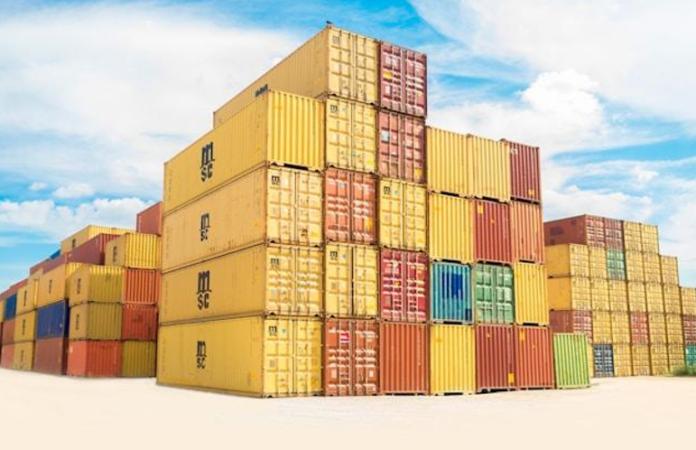
Photo by frank mckenna on Unsplash
Shipping containers have evolved significantly from their original role as basic cargo carriers. These versatile steel structures, known for their sturdy build and standardized sizes, have become icons of modern engineering creativity.
Today, they transport goods worldwide and serve as the foundation for innovative architectural projects, like container homes, offices, and pop-up shops.
Their adaptability has unlocked numerous possibilities, showcasing the potential of repurposing and sustainable construction.
In this blog post, we’ll delve into the engineering and innovations of shipping containers, covering fundamental principles focused on durability and adaptability and the intricate aspects of structural design.
Basics of Engineering Shipping Containers
The engineering of shipping containers relies on core principles emphasizing strength, versatility, and functionality.
Typically constructed from corten steel, known for its corrosion resistance, these containers deliver long-lasting performance even in tough environments.
Key design features, such as reinforced corners, durable flooring, and standardized sizes, enhance their durability and usability.
Galvanized vent hole metal plugs are also used to optimize container performance and longevity, providing ventilation and preventing condensation build-up.
One must grasp the fundamental knowledge and principles to effectively understand, design, and engineer structures using shipping containers. Here are the key aspects to keep in mind:
- Intermodality and Standardization: Shipping containers, typically ISO or intermodal, are standardized for easy transfer across various transportation modes like ships, trains, and trucks.
- Multi-container Structures and Structural Integrity: For multi-container structures, have a structural engineer design the connections between containers to ensure they are secure and stable.
- Modification and Adaptation: Architects and engineers must understand the considerations and challenges of designing and constructing modified shipping containers, including knowledge of container construction and the specific requirements for creating residential, commercial, or industrial spaces.
- Structural Design Principles: Engineers use fundamental engineering principles and expertise with materials such as steel, aluminum, and concrete to design shipping container structures. The strong steel frame and corrugated Corten steel walls enhance their durability.
Shipping Container Structural Integrity
Structural engineering is crucial for ensuring the strength and durability of shipping containers. Engineers carefully design framing and support systems to endure dynamic loads during transport and stacking.
Factors like modifications, stacking methods, sea travel, and wear and tear can affect container integrity. Maintaining this integrity is vital for the safety and longevity of containers in transport, storage, and construction projects.
Creative Interior Design
The era of purely functional container interiors is over. Today, shipping container architecture emphasizes crafting comfortable and visually appealing living and working environments.
Designers employ innovative techniques to optimize space utilization, integrate clever storage solutions, and boost natural light with strategic window positioning.
High-quality finishes like bamboo flooring, reclaimed wood, and modern cabinetry elevate the interior of containers to rival that of conventional homes or offices.
Moreover, state-of-the-art insulation materials and climate control systems guarantee year-round comfort, effectively addressing temperature concerns.
Adaptations and Modifications
A fascinating element of shipping container engineering is the capability to alter and customize these structures for various uses.
Typical modifications involve creating openings for doors and windows, allowing them to be converted into offices, living spaces, or retail outlets.
Ingenious engineering has transformed containers into emergency shelters and even modular data centers.
The modifications and customizations in shipping container engineering cover various innovative uses, leveraging the containers’ strong build and adaptability. Below are some major areas where engineering modifications and adaptations are applied:
- Residential and Commercial Spaces. Engineers and architects transform shipping containers into homes, offices, and multi-story buildings by adding windows, doors, insulation, and interior finishes without compromising their structural strength.
- Off-Grid and Sustainable Solutions. Shipping containers are adapted for off-grid living, featuring solar power, rainwater harvesting, and sustainable designs to create eco-friendly, self-sufficient living environments.
- Artistic and Cultural Installations. Shipping containers are utilized as bases for public art, event spaces, and interactive exhibits, incorporating structural reinforcements and creative modifications to meet safety requirements while bringing artistic concepts to life.
- Mobile and Modular Structures: Designed for easy relocation, shipping containers are ideal for creating mobile offices, pop-up shops, portable labs, and modular building systems. Engineers tailor modifications to meet safety and building code standards for these uses.
- Specialized Shipping Container Engineering. Specialized containers like reefers, open tops, and flat racks are tailored to specific industrial needs. Reefers include advanced temperature control for perishable goods, while open tops and flat racks handle oversized or unique cargo. This engineering reflects the varied demands of global logistics and trade.
These modifications showcase the diverse and impactful role of engineering in unlocking the potential of shipping containers for a broad range of practical, sustainable, and creative purposes.
Endnote
Shipping container engineering exemplifies the adaptability, versatility, and sustainability of modern engineering. With continuous advancements, engineers are expanding the innovative potential of these steel structures, opening up new applications in a constantly evolving world.





